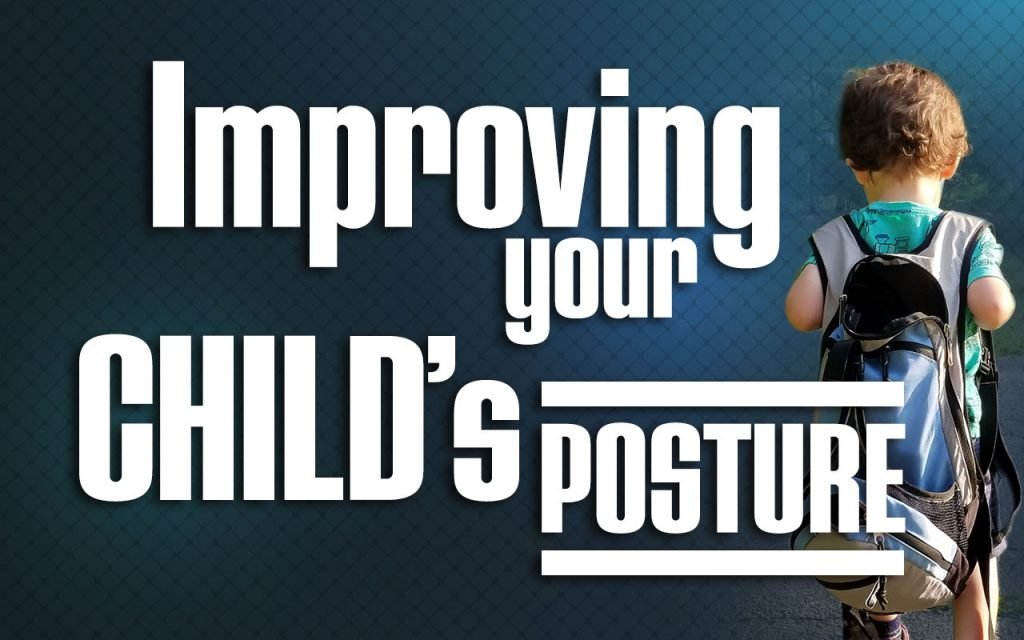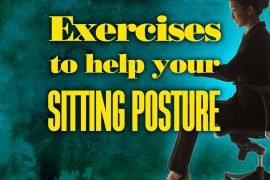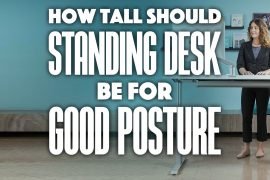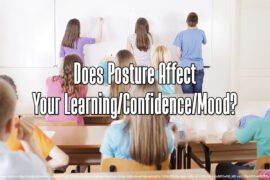[Updated on 1 March 2024] Your child spends countless hours sitting, ridding to and from school, doing homework, playing games, and texting on their phones. As a parent, your job is to ensure that your child develops healthy habits, and often, it seems the only way to accomplish these habits is to nag them. Nagging them always never ends well. Good posture is very important to children. Read on as we explore some useful exercises that can help you improve your child’s posture.
 Children are terrible slouchers, and it’s very easy to identify the symptoms. Shoulders down, back hunched and stomach out. There isn’t a perfect time for your children to learn good habits like now. In fact, the sooner they learn, the better. It doesn’t matter if your children have medical conditions or not; they can still benefit from posture exercises for children.
Children are terrible slouchers, and it’s very easy to identify the symptoms. Shoulders down, back hunched and stomach out. There isn’t a perfect time for your children to learn good habits like now. In fact, the sooner they learn, the better. It doesn’t matter if your children have medical conditions or not; they can still benefit from posture exercises for children.
How can you improve your child’s posture?
Table of Contents
Posture Development
Children experience rapid growth and an increase in postural responses during their first four years of life. This progress regresses until adult reflexes develop at the age of about ten years old. It is due to this reason that most training is done in a static posture and its dynamic reflexes happen during a child’s pre-school years.
This progress happens simultaneously with spinal development. It’s important to note that postural habits can start immediately after childbirth. However, it often depends on the amount of time they spend in the car or buggy seat. It will create a constricted space and a static contracted position.
According to studies, lower back pain begins in childhood. About 10% of 10-year old suffer from this problem, and poor posture is often the reason behind it. Studies have also shown that training during these early childhood days significantly improve low back pain in children.
Why is posture an issue for children?
Your child spends an awful amount of time in school sitting, wearing a backpack, playing on an iPad, participating in sports or texting their friends. It is because of this reason that text neck has become such a big problem for young children. These posture problems are also starting younger and younger, a reason every parent needs to be concerned.
What causes poor posture in children?
Posture is the ability of your body to control its position in space against external forces. Posture is both dynamic and static. Poor posture in children can develop from a combination of the following problems.
-
Peripheral Nervous System Disorders
The peripheral nervous system includes every nerve outside the brain and spinal cord. Disorders in this system can disrupt brain-muscle communication for posture maintenance. Conditions like peripheral neuropathy, which affects damaged nerves, or muscular dystrophy, which gradually weakens muscles, can lead to bad posture in kids. These conditions could affect muscle strength, coordination, and body awareness, which might make it tough for kids to maintain good body alignment.
-
Ear Problems
Ear issues can impact posture by affecting balance and spatial awareness. The inner ear plays an essential part in our balance and posture. It’s part of the body’s vestibular system that keeps us steady! Inner ear infections or issues such as vestibular disorders can mess up this system, causing dizziness, vertigo, and trouble keeping your balance. Untreated ear problems in children can cause them to develop abnormal postures to manage imbalance or dizziness, possibly leading to poor posture habits.
-
Eye Problems
Vision is important for keeping your posture in check and staying spatially aware. Children with untreated vision issues like astigmatism, nearsightedness, or strabismus (crossed eyes) may adjust their posture to improve their vision or reduce discomfort. For example, if a kid has trouble seeing, they might lean in or tilt their head to see better, which could develop bad posture habits over time. Eye fatigue due to extended screen time or poor lighting can affect children’s posture. They might slouch or strain their necks while concentrating on screens.
-
Central Nervous System Problems
The central nervous system, which consists of the spinal cord & brain, coordinates motor functions and posture control. Disorders that impact this system, like cerebral palsy, spina bifida, or traumatic brain injuries, can interfere with the brain’s capacity to transmit and receive signals associated with posture and movement. Children with these conditions may encounter muscle weakness, spasticity, or coordination challenges, which can hinder the ability to sustain correct posture without assistance or intervention. Physical therapy and specialized equipment may be required to tackle posture-related issues in these situations.
-
Musculoskeletal System Problems
The musculoskeletal system includes bones, muscles, tendons, and ligaments, all essential for supporting the body’s structure and movement. Different musculoskeletal conditions or abnormalities may lead to poor posture in children. Untreated scoliosis can lead to posture imbalance due to a lateral spine curvature. Similarly, muscle imbalances, joint hypermobility, and tightness can impact posture by misaligning the body. Addressing these problems typically requires a mix of exercises, stretches, and orthotic devices to enhance alignment and support the musculoskeletal system.
Chiropractors will check the musculoskeletal system and its relation to the nervous system. Most musculoskeletal problems affect your posture, and the most common issue is the deconditioning of the muscular system.
Impact of Prolonged Poor Posture on Children’s Skeletal Health
Holding your body in the wrong position over prolonged periods results in skeletal weakness in certain parts of the body. Ultimately, this will cause excessive strains and stresses on the spine and result in a restricted range of motion of the spinal segments, which in effect causes pain.
 Structural and mechanical changes in your child’s body like scoliosis will result in a poor looking posture. Poor posture in children will also cause function scoliosis, which is a sideways curvature of the spine.
Structural and mechanical changes in your child’s body like scoliosis will result in a poor looking posture. Poor posture in children will also cause function scoliosis, which is a sideways curvature of the spine.
Bad posture in children will also result in stress on the spine at certain levels. For instance, slouching puts a lot of unnecessary load on the middle back spinal region, that results in the jutting forward of the jaw and head. This action will lead to headaches and loss of concentration.
Since poor posture goes hand in hand with poor carrying techniques and lifting, it puts a lot of strain on the lower back after sitting all day and carrying heavy bags; it’s inevitable for kids to suffer from posture pain.
What to look for in your child’s posture
As a parent, you need to be aware of specific things when it comes to the way your child sits or stands. As, infants, you need to be careful about how they carry their heads. Check if it’s always off to one side, or they prefer to feed on the specific side more than the other.
As your child grows older (six years onwards) it’s important to be keen on how they sit. Note if they are leaning off on one side more than the other. As your child begins to walk, check out their walking pattern, as they get proficient at it.
 As they get to two years and older, their posture needs scrutiny even more. Check if their shoulders look unbalanced or slumped. The same thing applies when they are playing with their toys. Are they constantly looking down, leaning on one side or slumping their shoulders?
As they get to two years and older, their posture needs scrutiny even more. Check if their shoulders look unbalanced or slumped. The same thing applies when they are playing with their toys. Are they constantly looking down, leaning on one side or slumping their shoulders?
These symptoms could be due to issues with their neuromusculoskeletal system and need to be checked by a physician immediately. Teach your child how to stand tall, demonstrate how to stand tall with their head high. Their ears, shoulders, hips, knees, and ankles need to be in a straight line with their belly button pulled in.
Show them how to relax their spine muscles. This, however, can be accomplished through exercise. All they need to do is relax their tummy letting their head hang forward loosely. Then, they could gently turn their heads from one side to the other in 15-second successions.
Child’s Posture Exercises
Just like you would teach your child how to tie their shoes or brush their teeth, proper posture is something that, you could practice together. You could devote, three minutes every single day to teach your child healthy posture habits, and it will pay off big time for both your health and that of your child.
Chin Glide
Some children will crane their necks trying to look at something in the distance, participating in a conversation or reading. Over time, this action strains their necks and causes tension in the shoulders down the spine.
 Take it upon yourself to remind your child to have their chin tucked, helping attain a better neck to spine alignment. You could also spare some time to teach them the chin glide exercise. This exercise needs your child to keep their necks relaxed and shoulders down.
Take it upon yourself to remind your child to have their chin tucked, helping attain a better neck to spine alignment. You could also spare some time to teach them the chin glide exercise. This exercise needs your child to keep their necks relaxed and shoulders down.
Request them to touch their upper teeth to their bottom teeth. Make sure they don’t clench, have them glide their heads backward about an inch. Its vital to the exercise that their heads are level. Ask them to take in deep breathes for up to 10 seconds, relax and repeat the exercise.
Balance and Movement
 Physical exercises that develop gross motor skills build your muscle tone, improve your balance and can also help improve your child’s posture. Develop and obstacle course on a playground that has children running, walking, hopping, crawling, rolling, climbing and swinging. For more advanced activities, have them try to balance and movement exercise that targets the core- these are the muscles in the trunk of the body that help you hold your body in proper alignment. You could also include yoga postures such as tree poses, and warrior poses.
Physical exercises that develop gross motor skills build your muscle tone, improve your balance and can also help improve your child’s posture. Develop and obstacle course on a playground that has children running, walking, hopping, crawling, rolling, climbing and swinging. For more advanced activities, have them try to balance and movement exercise that targets the core- these are the muscles in the trunk of the body that help you hold your body in proper alignment. You could also include yoga postures such as tree poses, and warrior poses.
Sitting Stretches
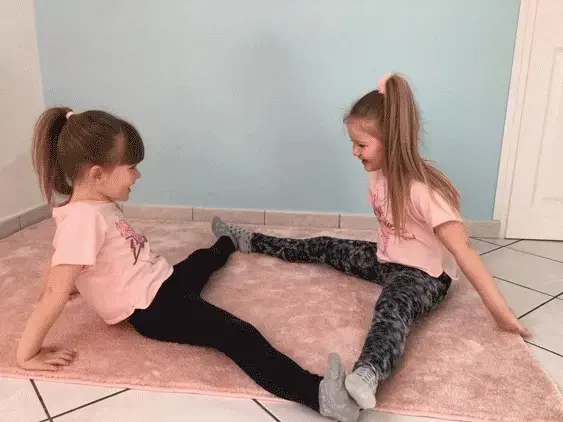
Sitting stretches can significantly improve your child’s posture. This exercise is perfected relaxed in a comfortable but firm chair. Your child’s feet need to be flat on the ground while sitting up straight. Their backs shouldn’t touch the chair. Have them breathe deeply as they tense and release their neck muscles, back, and shoulders.
Ensure your child pulls their shoulders downward and backward as they inhale. This action will form a small arch along with their spines. They could also exhale bringing their arms overhead with their palms facing outwards. Have them inhale and release the hold, bending their elbows back while pushing their chests outwards. Ensure they hold this position for 10 seconds before repeating the cycle twice.
Superman
For this exercise, your child needs to lay face down on a bed or the floor. Have them contract their buttocks to stabilize their lower back. They should lift their arms and both legs off the ground without further arching their lower backs.
Depending on your child’s strength level, have them hold both their arms and legs off the floor for about 15 to 30 seconds. The minimum long-term goal is to have your child hold this position for at least one minute.
In case this exercise proves to be difficult for your child, they could start by lifting their opposite arm and leg then later progress to lifting both arms and legs simultaneously. For best results, aim to have your child perform this exercise between two to three days a week.
A vital thing you need to do is check is how heavy your child’s backpack is. You could also buy them shoes that are supportive and have a good grip on the ground keeping them steady as they play hard. Your child like you needs to get exercise. Being active will help improve the child’s posture as well as their health. It’s important to help your child perform these exercises regularly. It will help them sit taller, feel more confident, and perform better on the playing field in no time.
Conclusion
Making sure our kids pick up healthy habits early on is crucial for their general well-being. Posture is a crucial yet often overlooked aspect of health that requires attention. As parents, we should guide our children to develop good posture habits positively, avoiding constant nagging. Understanding the underlying factors contributing to poor posture, ranging from musculoskeletal issues to extended periods of sitting and device usage, enables us to address the issue proactively.
Incorporating posture exercises and physical activity into children’s daily routines can strengthen muscles, improve balance, and maintain proper alignment. A variety of activities, from simple chin glides to more dynamic movements like the superman exercise, can make a significant difference.
Additionally, maintaining awareness of external factors such as backpack weight and footwear is crucial for their postural health. By collectively addressing these aspects, we empower our children to stand tall, feel confident, and flourish in every aspect of their lives.
Essentially, investing in the posture health of our children today establishes the foundation for a healthier and stronger future. Let’s prioritize their well-being by cultivating healthy posture habits from an early age. It ensures they develop the strength and vitality to face life’s challenges confidently.


